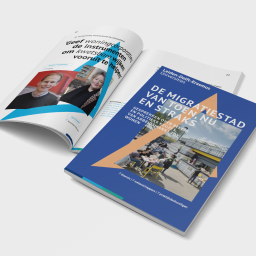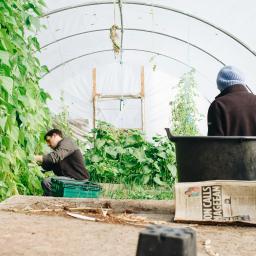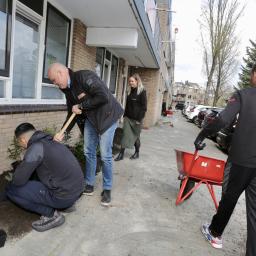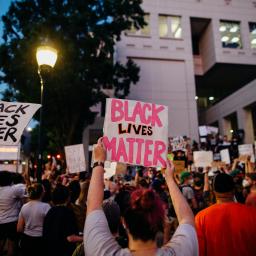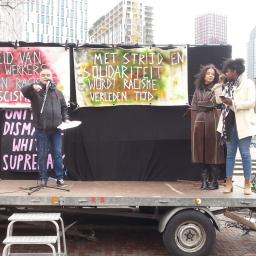From feeling out of place in your own neighbourhood to the very real inequality of opportunity, much can be tackled through the physical layout of a city. Urban planners Caroline Newton and Wouter Veldhuis are championing the case for this. 'Casual encounters are crucial for feeling at home.' By Nynke van Spiegel
Intersectionality
With intersectionality, you are aware that people can deviate from 'the norm' on several axes, that these axes influence each other, and that this determines a person's position in society. An example: someone can be female and black. And lesbian. And a single mother. And also visually impaired. You get the picture? Then, add the fact that she is rich, very rich. Suddenly, the picture looks different. That is because someone who is rich occupies a completely different position in society to someone who is poor, even if they are otherwise exactly the same. That, in a nutshell, is intersectionality. Source: Movisie.nl
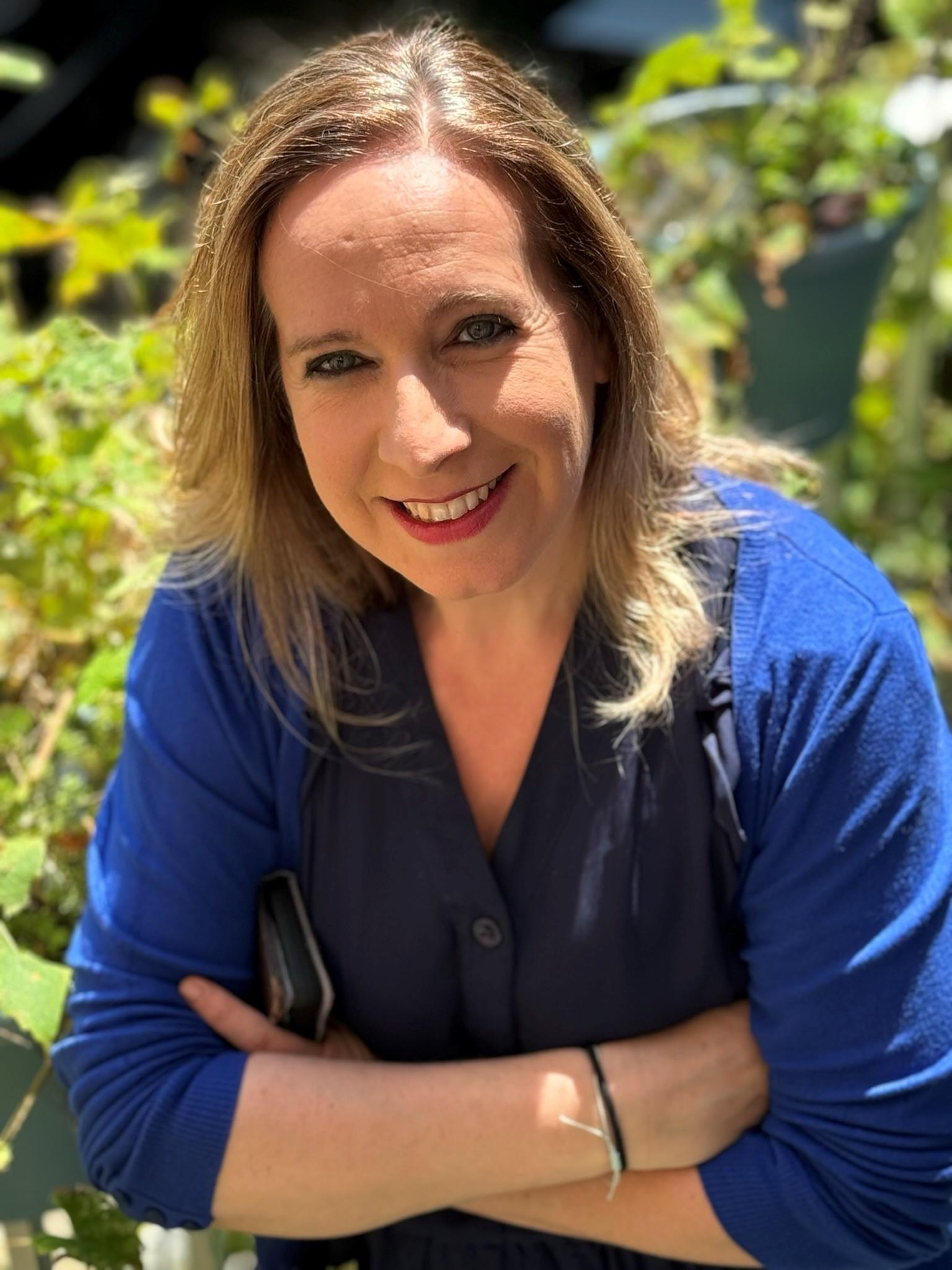 Looking at the migration city of the future, what is a key challenge? Associate professor of urban planning Caroline Newton: 'Politicians and the media often place a disproportionate emphasis on the negative aspects of migration. They highlight the problems and perceived threats of people who differ from the majority, contributing to a climate of fear and exclusion. Intersectional thinking provides a powerful counterpoint to this narrative. By recognising and appreciating people’s multiple identities and experiences, this approach helps us look beyond simplistic categorisations of ‘us’ versus ‘them’. Emphasising our shared humanity and fostering empathy are vital, as is a world where an individual is valued not only for their economic usefulness. We need to integrate these values not only in our daily interactions, but also in our education systems. Future urban planners, architects, and designers need to develop empathy as a fundamental skill.'
Looking at the migration city of the future, what is a key challenge? Associate professor of urban planning Caroline Newton: 'Politicians and the media often place a disproportionate emphasis on the negative aspects of migration. They highlight the problems and perceived threats of people who differ from the majority, contributing to a climate of fear and exclusion. Intersectional thinking provides a powerful counterpoint to this narrative. By recognising and appreciating people’s multiple identities and experiences, this approach helps us look beyond simplistic categorisations of ‘us’ versus ‘them’. Emphasising our shared humanity and fostering empathy are vital, as is a world where an individual is valued not only for their economic usefulness. We need to integrate these values not only in our daily interactions, but also in our education systems. Future urban planners, architects, and designers need to develop empathy as a fundamental skill.'
Why is this particularly important for a migrant city? Urban planner and architect Wouter Veldhuis: 'Residents in migrant cities have a wide range of values and life experiences. Empathy and the ability to put your own cultural bias into perspective is the only way to make valuable contributions to the superdiverse society.'
Newton: 'Our individual experiences and identities are deeply interconnected and influenced by shared histories. Migrants bring with them experiences and identities, which are further shaped in the country of arrival in relation to the identities of those who have lived there for a long time. Urban planners in a migration society need to recognise that policies affect different groups differently, as well as the way their identities develop in that interaction. A current concern is that migrants and people from migrant backgrounds who are socially active feel less and less like full members of society. This is mainly because of damaging rhetoric on the part of politicians.'
Sir, it’s all very nice of you to come and speak with me, but I think this is a good neighbourhood to be poor.'
Does intersectionality play a role in urban development today? Veldhuis: 'I am pleased that we are now looking more broadly at the factors that determine your chances in society. In the spatial domain, it is evident that the place where you live, where you go to school, where there are social amenities, and where you find and can meet friends, plays an important role. So intersectionality does have spatial components.'
'I take issue with the fact that in practice these insights often lead to database logic, where you combine all the numbers and conclude that this neighbourhood has a problem. Neighbourhoods never have a problem: there are people in the neighbourhood who have problems. Arnold Reijndorp once spoke to a woman in a Ghent neighbourhood, in which poverty was widespread. She said: “Sir, it’s all very nice of you to come and speak with me, but I think this is a good neighbourhood to be poor.” Why is low income necessarily a problem? Why can’t people with little education lead a good life? You only learn what meaningful living in a meaningful environment means when you talk to residents themselves and see through the statistics to genuinely try to understand their daily lives.'
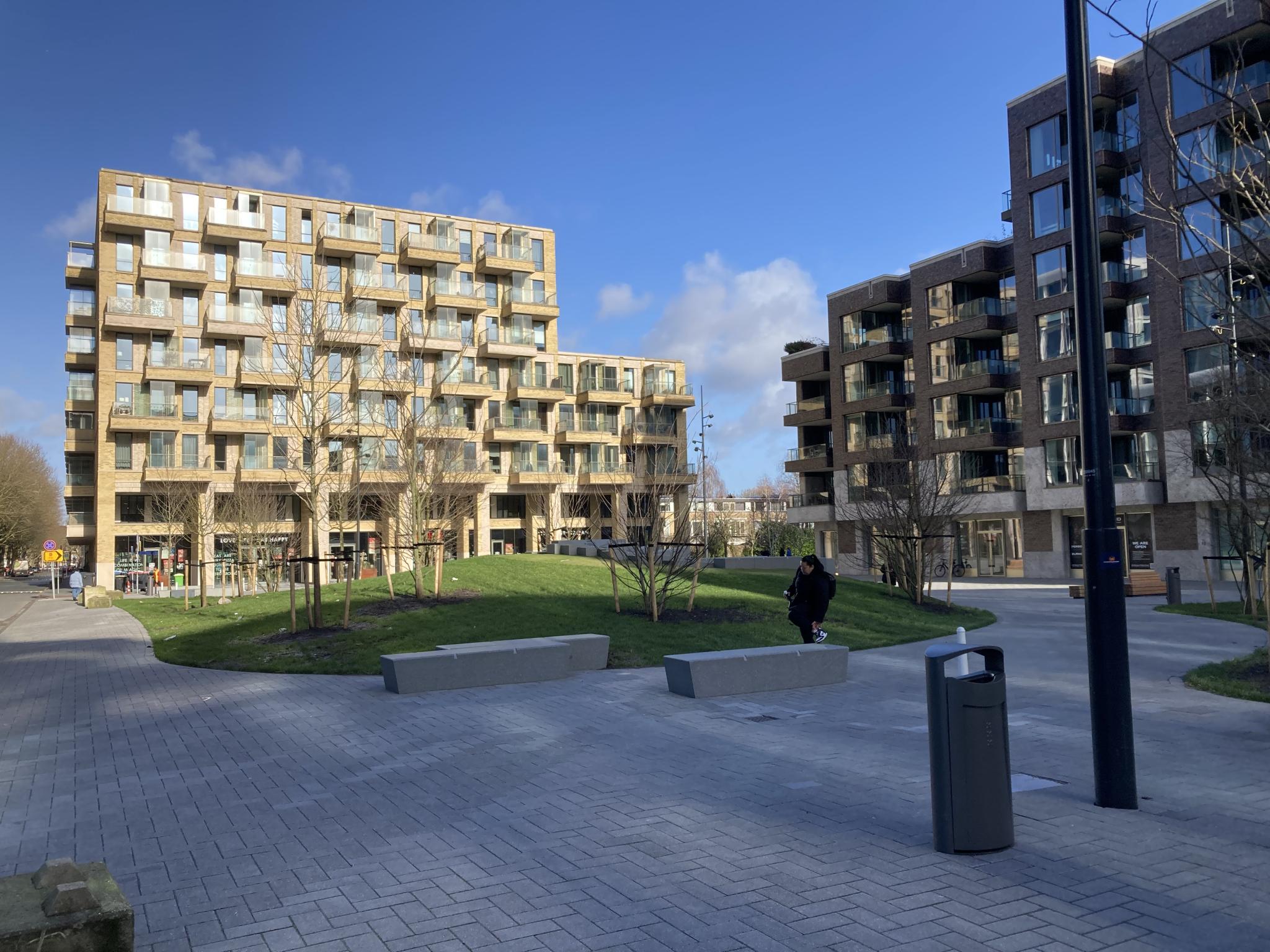
At Zuidas, the city council plants mature trees costing thousands of euros.'
A just city with equal opportunities and room for different perspectives: how can you implement that in design? Veldhuis: 'I subscribe to philosopher Amartya Sen's view that there is no such thing as a just city, but you should always try to make unjust situations more just. A painful example is that of Zuidas in Amsterdam, where there is seemingly unlimited funds to build high-quality green public spaces. There, the city council plants mature trees costing thousands of euros, while for a nearby heavily deprived district undergoing reconstruction, funds for maintaining the tree stock are limited. Any trees that are planted there are modest and inexpensive trees.'
'The underlying idea is the trickle down effect: making the Zuidas a top international environment will help Zuidoost and Nieuw-West also feel the benefits. It does not work in practice. So why not invest in the very places where opportunities are scarce and stop trying to boost the self-reliance of a business district that has enough money and capacity to manage itself? For example, build good-quality playgrounds in poorer neighbourhoods with large families or increase the budget for public space management in these neighbourhoods.'
'With the global rise of the cities, there are a limited number of winners and more and more losers. This is evident from the decline of primary amenities, such as healthcare, education, and sports and culture. In successful areas, too, there are dreadfully wide disparities, often affecting the most vulnerable population groups. The Zaanstad local authority, for example, has only a fraction of the financial resources compared to those of Amsterdam. Zaanstad lacks the investment power to help residents in an easterly neighbourhood with liveability problems. Just a few kilometres away, Amsterdam is able to do so.'
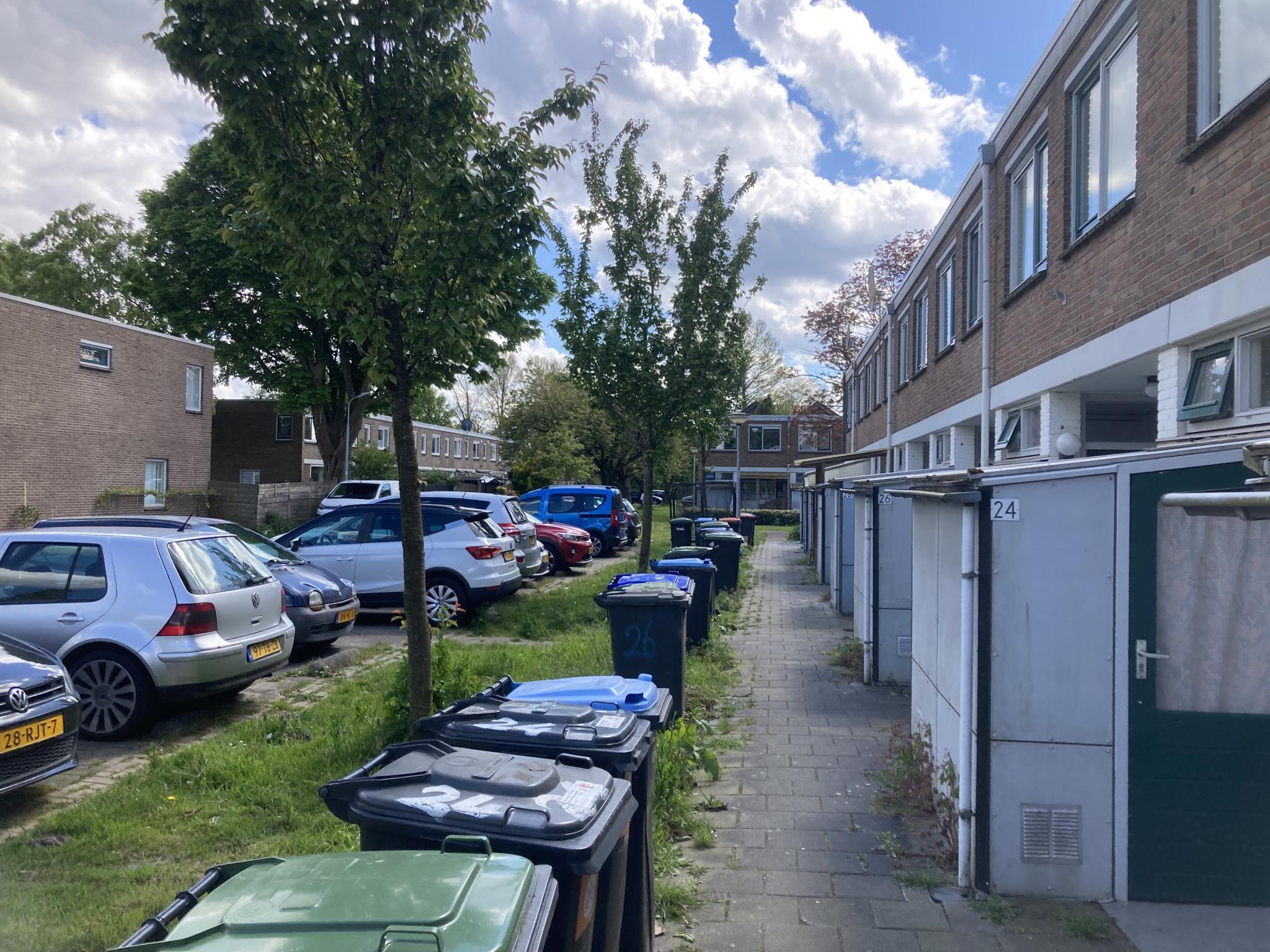
As an academic, what can you do to promote a just city? Newton: 'With the help of colleagues, we have set up the Center for the Just City, in which we explore what spatial justice means. We are working on the basis of three principles. First, a fair distribution of amenities, schools, shops, and green spaces. Second, the process by which a city is made: how do you make sure residents have a voice in this? And finally, recognising and respecting people’s different identities, situations, and needs. In doing so, we try to counter the growing trend of homogenisation and the loss of unique cultural and social identities. In a just city, we value the diversity of the people who live there and look for ways to reflect this diversity.'
Car journey times have become the yardstick; people no longer bump into each other.'
What is important to include in the liveable city of the future? Veldhuis: 'As an urban planner, I think proximity is a very important concept. That is one of the most powerful tools we as spatial designers possess. We have spent a hundred years managing the separation of functions and increasing distances. At a time when the clustering of factories and working-class neighbourhoods led to very unhealthy living conditions, this made sense. But we have taken it so far that we have created a society in which car journey times have become the yardstick. A society of long distances, where people no longer bump into each other. However, human needs have not changed: proximity to healthcare, education, green spaces, and shops for everyday necessities.'
'The solution to the lack of amenities is therefore not to increase mobility, but to increase proximity. The city of the future will be created by building new homes in places where people already live and where there are already amenities. This will create a city where people move mostly on foot and by bike, with all sorts of additional benefits, such as more casual encounters, thereby strengthening connections within neighbourhoods. Pedestrians walking through a neighbourhood on a daily basis influence the living environment in a positive way. Neighbours become familiar strangers to each other, nodding at each other when walking the dog or going to the shops. These casual encounters are crucial for feeling at home and for giving meaning to your life.'
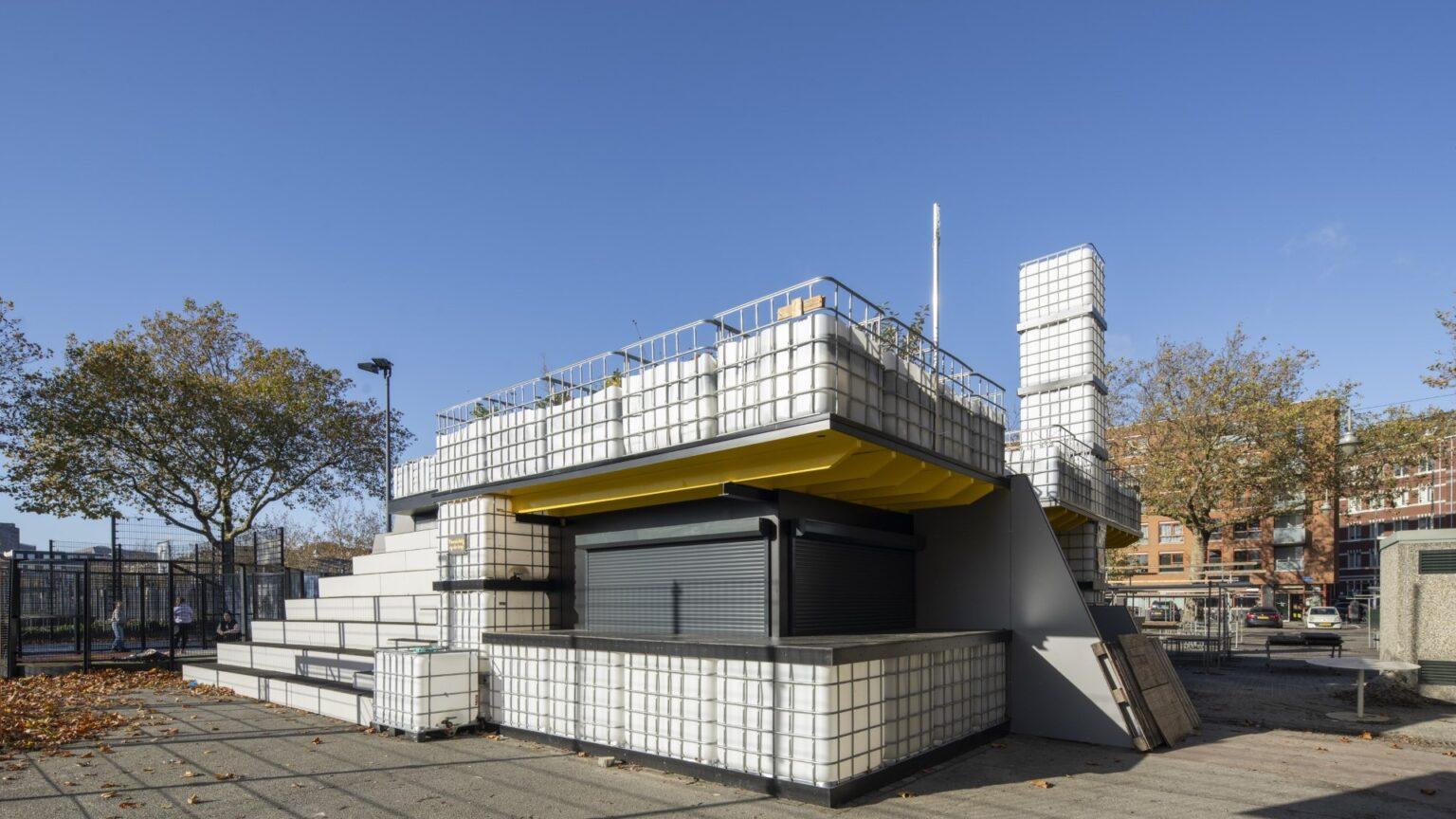
Are there any hopeful examples of a focus on shared humanity and intersectionality? Newton: 'Segregation in cities like Amsterdam or London is increasing, but there are also many great projects. The Afrikaanderwijk Cooperative in Rotterdam Zuid, for example, is committed to strengthening the community by bringing together entrepreneurs, producers, a wide variety of social groups, and the market. Local residents offer services such as catering, cleaning, and textile production, supporting sustainable local production, knowledge sharing, and economic activity. The scope of the cooperative has grown since the establishment of the Wijk Werkcoöperatie. It provides odd jobs in the Afrikaanderwijk and Vreewijk neighbourhoods. The recent opening of the Grondstoffenstation (resource station) is another big step forward. It sorts and recycles market waste such as wood, paper, and plastic.'
Why does the government leave the market untouched, while constantly controlling neighbourhoods and its citizens?'
'Governments should allow greater scope for this type of bottom-up initiative and for civil society. As a government, why would you let the market run free while constantly monitoring neighbourhoods and making citizens - especially those from migrant backgrounds - feel that the government does not trust them? The government represents us, the citizens, and politicians often seem to forget that. They have a responsibility to encourage and mobilise our collective trust to build a better society together.'
Urban planner, architect, and political scientist Caroline Newton is an associate professor at the Urbanism department of the Faculty of Architecture and the Built Environment at TU Delft. She feels an involvement with the social and political dimensions of design. She is committed to the creation of just, equal, and vibrant cities.
Urban developer and architect Wouter Veldhuis is a partner of MUST, an urban development firm focused on developing an equitable living environment. He is also the Chief Government Advisor on the Built and Rural Environment. In that role, he is committed to improving the connections between social issues with justice.
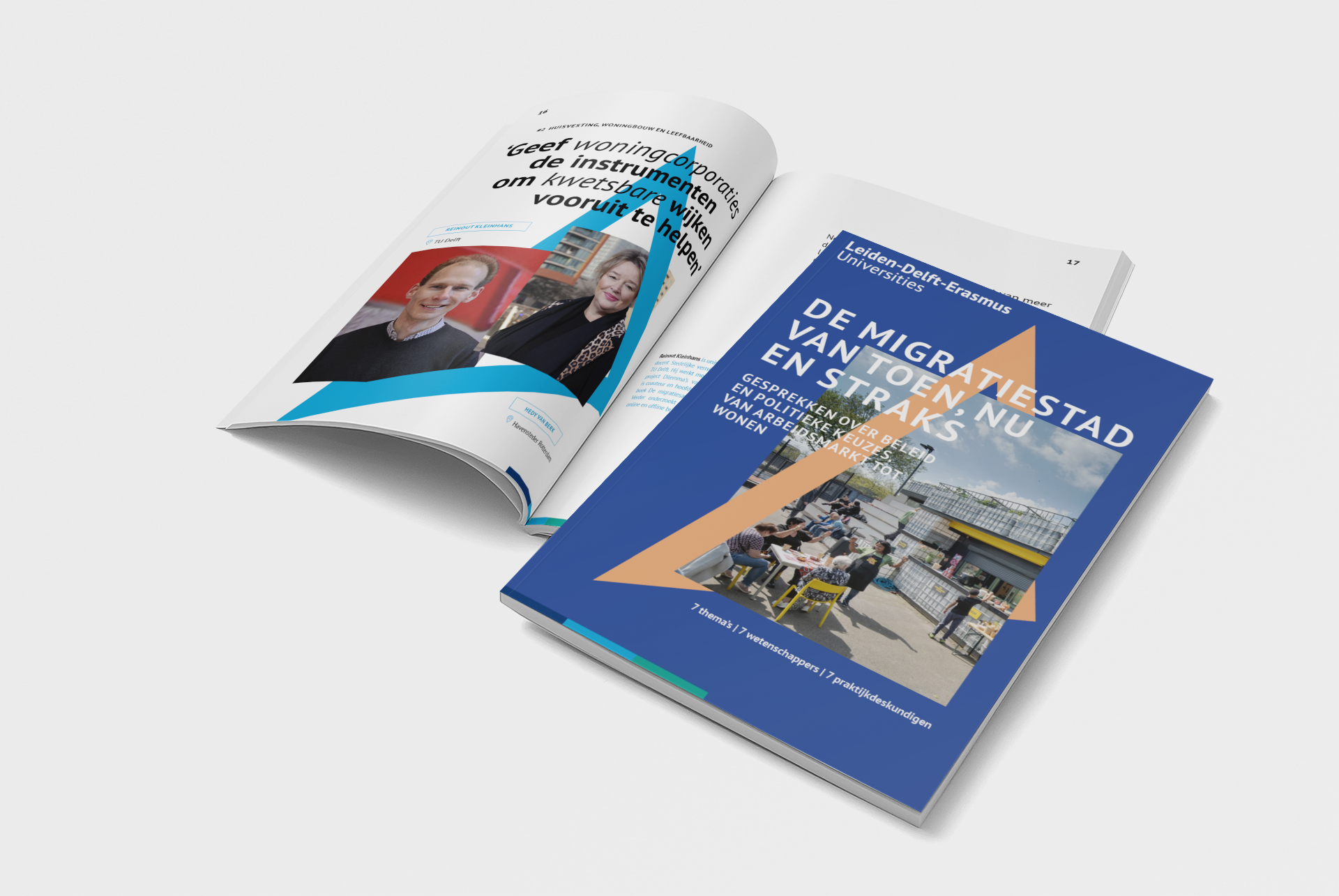 White paper 'The migration city of then, now and later'
White paper 'The migration city of then, now and later'
This article is from the sixth white paper of Leiden-Delft-Erasmus Universities. If you would like to copy one or more texts, please contact Katja Hoiting k.hoiting@tudelft.nl.
Sender of this edition is the Leiden-Delft-Erasmus Centre Governance of Migration and Diversity, founded in 2020 to conduct interdisciplinary research on the governance issues surrounding migration, diversity and inequality.

